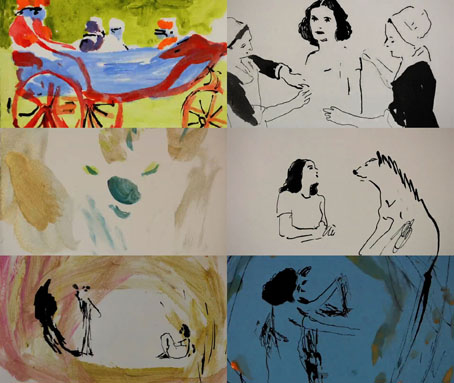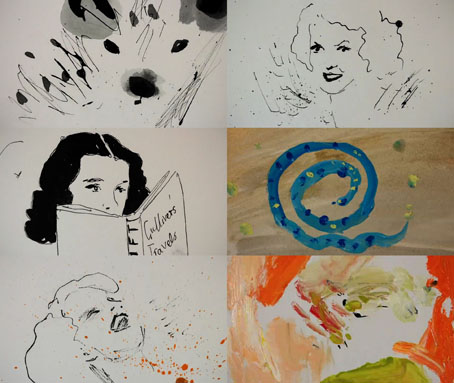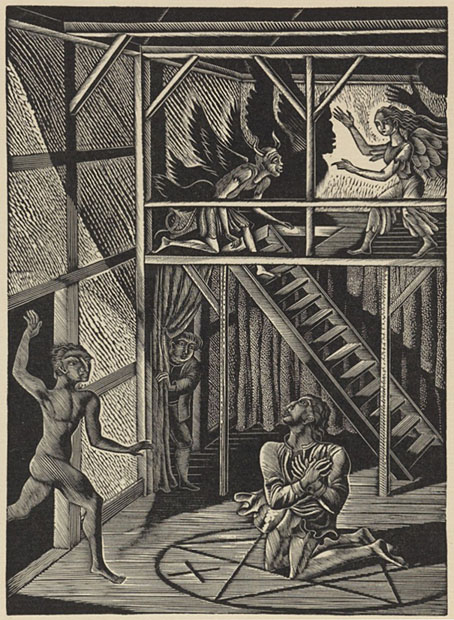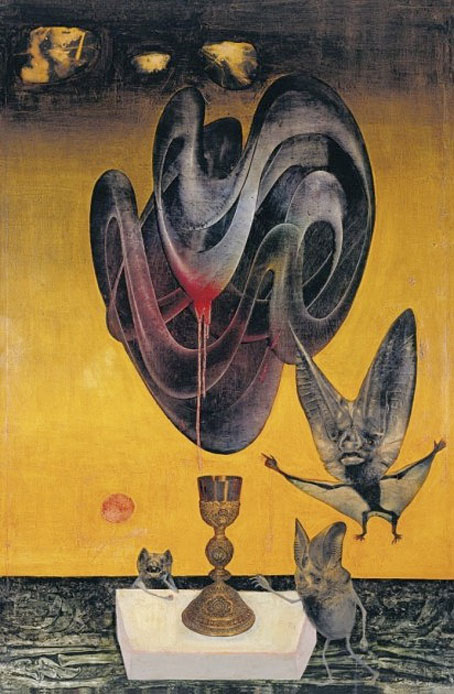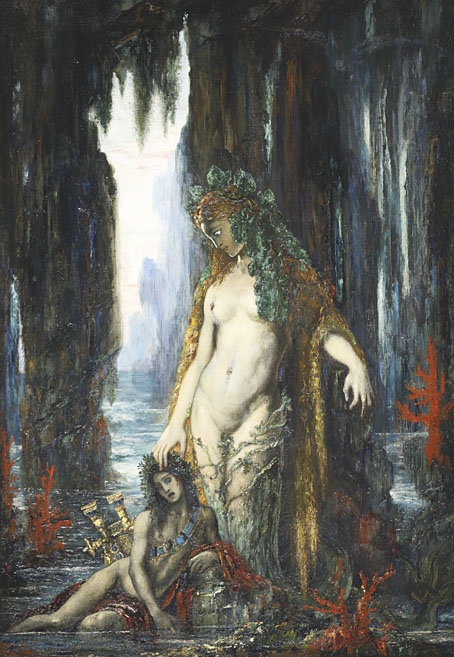
Cover Design for ‘The Yellow Book’ Vol.I (1894) by Aubrey Beardsley.
• “[Dorian Gray’s] version of Decadence filled the popular imagination when Decadence became an ostentatiously stylish zeitgeist—stylish being the operative word. For Decadent style encapsulated the attitude of being hellbent on thrilling experiences.” The danger of Decadence is also its value. We need more of it, says Kate Hext.
• At Swan River Press: Of Wraiths, Spooks and Spectres. Robert Lloyd Parry, in an interview with John Kenny, talks about the researches that led to the compiling of his latest ghost-story collection, Friends and Spectres.
• The latest pictorial accumulation from DJ Food is a collection of late-60s concert posters by Jim Michaelson, an artist whose designs look like Mad magazine going fully psychedelic.
• Old music: Future Travel by David Rosenboom; new music: Taking Shasta Mountain (By Strategy) by John Von Seggern & Dean DeBenedictis.
• At Public Domain Review: Hunter Dukes on Rückenfiguren, views of the human back as a subject in the history of art.
• In a week when Adobe has been in the news for pissing off its users, a list of alternatives for Adobe software.
• At Spoon & Tamago: Hokusai-inspired erasers reveal Mt. Fuji the more they get used.
• At Unquiet Things: A celebration of Annie Stegg Gerard’s enchanting worlds.
• Mix of the week: DreamScenes – June 2024 by Ambientblog.
• At The Quietus: The Strange World of…Diamanda Galás.
• Wraith (2002) by Redshift | El Wraith (2002) by Amon Tobin | Wraith (2015) by John Carpenter

